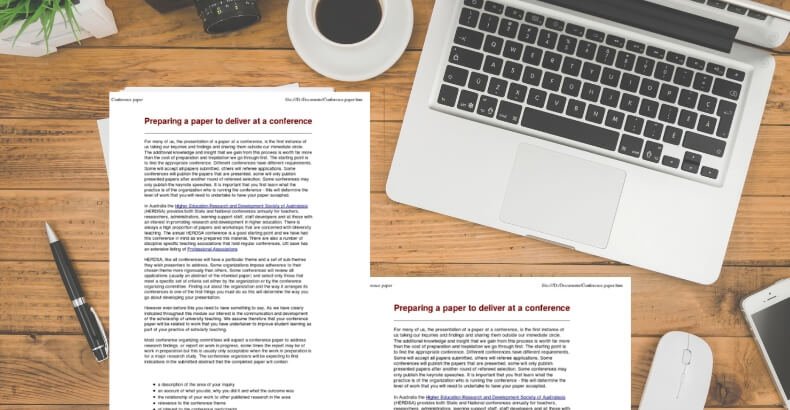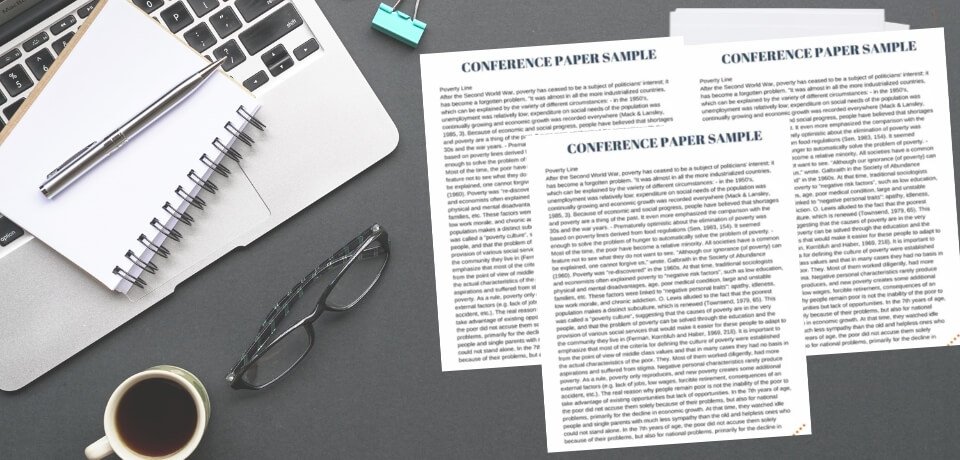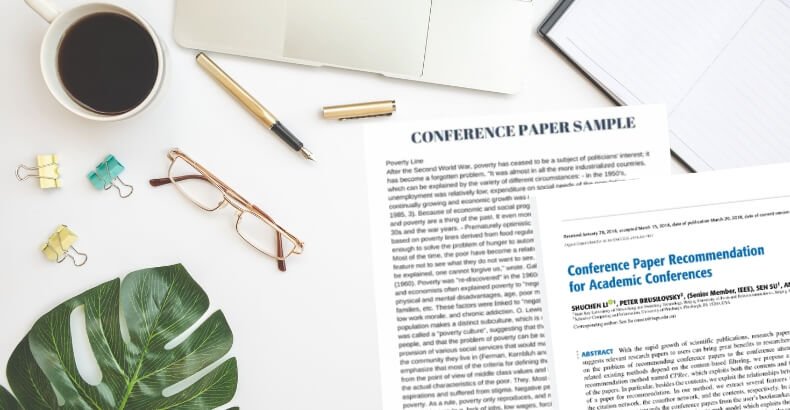Conference papers are extremely valuable for sharing research within the academic community, but they come with limitations regarding length and format. These limitations are designed to maximize efficiency and ensure focus. Now you might ask: How many pages is a conference paper?
Typically, a conference paper ranges from 4 to 10 pages, with most conferences recommending a length of about 6 to 8 pages. This length includes references and visuals, allowing authors to present their findings clearly and concisely. Factors like topic complexity, formatting requirements, and audience expectations all influence the final page count.
If you’re curious about the specifics of conference paper lengths and how to deal with requirements, you’re in the right place. This article will provide detailed information to help you understand the various factors affecting conference paper length.
What Determines the Length of a Conference Paper?
The length of a conference paper is significantly influenced by the guidelines provided by the conference organizers. These guidelines outline not only the expected word count but also the structure of the paper. By adhering to these standards, authors can ensure that their work meets the reviewing committee’s expectations and is suitable for presentation.

Another important factor is the topic’s complexity and the depth of research involved. Detailed explanations of methodologies, results, and discussions may require additional pages. Authors must balance providing enough detail to support their findings while remaining concise to maintain the audience’s interest.
The format of the conference paper plays a crucial role in determining length. This format often dictates the inclusion of specific sections, such as the introduction, literature review, and conclusion. By knowing the required structure of a conference paper format, authors can better gauge how much content they need to include and how to organize their papers effectively.
How Many Pages Is a Conference Paper?
Conference papers are an essential medium for sharing the latest research and ideas within the academic community. The length of these papers can vary widely. Your submission will be more effective if you understand these influences.

Conference Guidelines
Page limits are often specified by conference organizers. These guidelines ensure that all presentations fit into the given schedule and that discussions remain focused and efficient. Most conferences outline a recommended page count, of between 6 to 8 pages, including references and visuals. Following these rules is crucial for the acceptance of your paper.
Depth of Research
The complexity of the topic you are discussing can affect the length of your conference paper. New or complex topics may require more pages to provide background information, methodology, and data analysis for a thorough exploration of the subject matter. Generally, papers that introduce innovative concepts may lean toward the higher end of the typical page range, around 8 to 10 pages.
Formatting Requirements
Note that formatting plays a significant role in determining the physical length of a conference paper. Font size, margin widths, and spacing options can all influence how much content fits on each page. Standard formatting requirements, such as 12-point font and double spacing, can impact how you present your information. Sticking to the required formatting is crucial for meeting the page count specifications.
Audience and Field Specifics
Different fields and audiences may have varying expectations for conference paper length. Technical fields might require longer, more detailed papers, while the humanities may lean towards conciseness and brevity in their presentations. For instance, engineering and computer science papers often exceed 8 pages, while social science papers stay closer to the 6-page mark.
Purpose of the Paper
Whether you’re presenting new research, proposing a hypothesis, or providing a full review, the length of your paper can vary. Papers aiming to cover complex studies or present significant empirical data might naturally be longer. If your goal is to generate discussion or suggest further research, a lengthier format of around 8 pages may be appropriate.
Visuals and Supplementary Materials
Adding graphs, charts, and other visual elements can affect the page count of your conference paper. While visuals help succinctly convey complex data, they require additional space, potentially extending the overall length of the document. Including visuals often means accounting for at least 1 or 2 additional pages, depending on the number and complexity of the graphics.
A conference paper’s page length is affected by several factors, from the rules of the conference to the intrinsic needs of the research presented. By being aware of these factors, you can better prepare your paper to meet both formal requirements and academic peers’ expectations.
Tips for Staying Within the Page Limit for Conference Paper
Keeping your conference paper within the page limit is crucial to ensuring clarity and meeting submission guidelines. A well-written paper allows readers to grasp your main points without feeling overwhelmed. Here are some helpful tips to keep your writing focused and within the required length.
- Create a Detailed Outline: Start by outlining your main points and arguments. This outline helps you structure your paper efficiently, focusing on essential content and avoiding unnecessary tangents.
- Prioritize Key Information: Focus on including only the most critical information relevant to your topic. Eliminating unnecessary details ensures that every section of your paper adds value and supports your main argument.
- Use Clear and Simple Language: You should aim for simple language and straightforward sentences. Avoid complex vocabulary or technical terms that can obscure your message, helping you stay within the page limit while maintaining clarity.
- Avoid Duplication: Review your paper for any repetitive information or phrases. Cutting out duplicate content will improve your writing, reducing the overall length without sacrificing essential content.
- Incorporate Visuals Wisely: Use charts, graphs, or tables to convey complex data succinctly. Visuals can help summarize information and reduce the need for lengthy explanations in the text.
- Edit Carefully: After writing your first draft, take time to edit thoroughly. Look for areas where you can condense your arguments or cut unnecessary content, ensuring you stay within the limit.
- Seek Feedback: Get feedback from peers or mentors on your draft. Fresh eyes can identify areas where you might be verbose or unclear, helping you refine your work to fit the page limit.
The length of your conference paper must be managed effectively in order to present your research clearly and accurately. By following these tips, you can ensure your paper is impactful while staying within the required limits.
Common Mistakes to Avoid Regarding Length of Conference Paper
When writing a conference paper, many authors struggle with length. So, you should avoid both being too brief and overly detailed, as both can damage your work’s effectiveness. Keeping content and clarity in balance is crucial. Here are common mistakes to avoid regarding length.

Ignoring Conference Guidelines
One common mistake is not following the specific guidelines provided by the conference. Each conference typically has its own rules regarding length, formatting, and structure. Failing to adhere to these guidelines can lead to paper disqualification or rejection. Always check the requirements before submitting to ensure compliance with expectations.
Overloading with Information
Another frequent error is trying to fit too much information into the paper. Providing full coverage of the topic is important, but overloading readers with unnecessary details can distract from the main points. Focus on presenting your key findings clearly and concisely, allowing your audience to grasp the essential elements without confusion.
Lack of Focus
A lack of focus in your paper can also result in unnecessary length. When writers deviate from the main topic or include irrelevant information, their arguments can lose strength. Following the steps to write a business conference paper and staying focused on the central thesis with relevant evidence will help keep your paper concise and impactful.
Taking No Action to Edit
Many authors underestimate the importance of editing their work for length. Your paper should be reviewed for clarity and conciseness after drafting. This process often reveals areas where you can cut down on excessive wording or unnecessary phrases. Editing helps simplify your paper, making it more engaging for readers.
Failing to Seek Feedback
Failing to get feedback from peers or mentors can hinder your ability to judge the appropriate length. Others can provide valuable insights into areas that may need expansion or contraction. Collaborating with colleagues can improve your paper and ensure that it meets the expectations of your audience and the conference.
You can significantly improve the quality of your conference paper by avoiding these common mistakes regarding length. By sticking to guidelines, focusing on key points, and seeking feedback, you can create a more effective and impactful submission.
Frequently Asked Questions (FAQs)
A conference paper’s typical length is essential for preparing an effective submission. The page count can vary depending on several factors, and knowing these can help you create a well-structured and impactful paper. Here are some common questions about conference paper length.
What Factors Influence the Length of a Conference Paper?
The length of a conference paper can be influenced by several factors, including the topic’s complexity, the specific requirements set by the conference, and the expected audience. Papers covering more intricate research typically require additional pages to provide thorough explanations and data, while simpler topics may fit into fewer pages.
How Do Visual Elements Impact the Overall Page Count?
Adding visual elements to a conference paper can significantly affect its page count. These visuals often help to explain complex information succinctly. However, they also require additional space, which may lead to an increase in the total number of pages, typically adding 1 to 2 pages depending on how many visuals are included.
Are There Different Length Expectations Across Subjects?
Yes, different academic subjects have varying expectations regarding the length of conference papers. For example, fields such as engineering and computer science may expect longer papers due to the detailed nature of the research. In contrast, humanities and social sciences may prioritize brevity and conciseness, leading to shorter papers typically around 6 pages.
How Can I Adjust My Paper if It Exceeds the Length Limit?
If your paper exceeds the length limit set by the conference, consider revising it for conciseness. Look for sections that can be streamlined by removing redundant information or overly detailed explanations. Aim to present your key findings clearly without unnecessary elaboration to meet the page requirements effectively.
What Role Do Submission Guidelines Play in Determining Length?
You must follow submission guidelines when determining the length of your conference paper. These guidelines specify the required page limits, formatting rules, and structure. Following to these guidelines is essential for ensuring that your paper meets the expectations of the reviewing committee and is suitable for presentation.
Bottom Line
There are several factors that determine the length of a conference paper, such as the complexity of the topic, the guidelines of the conference, and the inclusion of visuals. To meet the necessary requirements, you should consider these aspects. If you’re wondering, “How many pages is a conference paper?” the typical range is between 4 to 10 pages, with most conferences recommending around 6 to 8 pages.
Make sure your conference paper is clear and concise. Avoid unnecessary details, stick to formatting guidelines, and use visuals strategically to enhance your content. Best of luck with your submission, and may your paper make a strong impact at the conference!